Where Are The Dead Animals In Space?
Animals in space
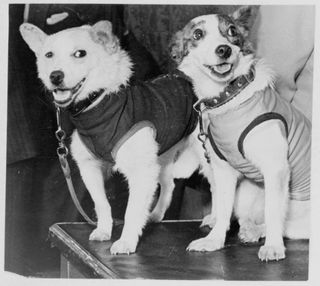
The kickoff animals to attain space were fruit flies that the Usa launched aboard captured High german rockets in 1947. The first mammal to reach space was a rhesus monkey named Albert II, who flew two years later.
Both these missions were suborbital, every bit were all creature flights for about a decade. The first animate being to orbit World was Laika, a dog launched by the Soviet Union in 1957 who died in orbit. The first animals to orbit Globe and land safely were the host of animals on the Soviet Sputnik five mission in 1960, led by dogs Strelka and Belka.
In these early on days of rocket scientific discipline, no one knew what spaceflight was similar. Engineers flew animals, specially dogs, monkeys and chimps, to learn how to launch and land living beings safely and to better sympathise how spaceflight might bear on human bodies.
Since then, animals continue to play an of import function in understanding the affect of microgravity on many biological functions. Astronauts accept studied all kinds of animals — wasps, beetles, tortoises, flies, worms, fish, spiders, rabbits, bees, ants, frogs, mice, crickets, rats, minnows, newts, snails, urchins, moths, alkali shrimp, jellyfish, guinea pigs, butterflies, scorpions and cockroaches, amid many others.
Photos: Pioneering animals in space
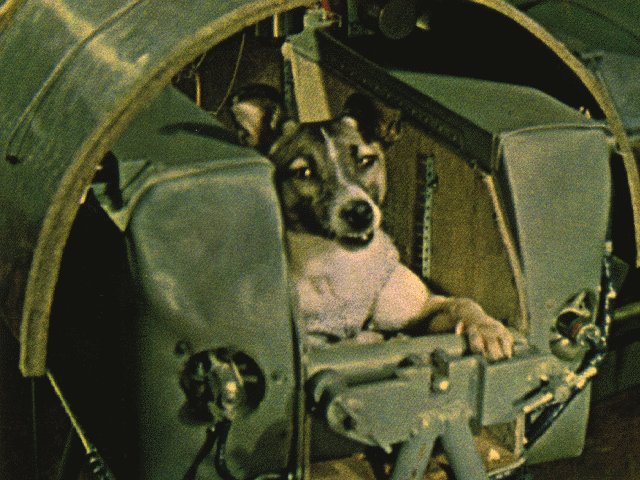
Animal astronaut firsts
Although there is no distinct boundary between the atmosphere and infinite, an imaginary line about 68 miles (110 kilometers) from the surface, chosen the Karman line, is usually where scientists say Earth'south atmosphere meets outer space.
The start animals to reach space — not counting any bacteria that may have hitched a ride on previous rockets — were fruit flies. On Feb. 20, 1947, the United States put fruit flies aboard captured German V-2 rockets to written report radiation exposure at loftier altitudes. In 3 minutes and 10 seconds of flight, the fruit flies reached an distance of 68 miles.
The first mammal in space was Albert II, a rhesus monkey launched by NASA who reached an altitude of 83 miles (134 km) on June 14, 1949. Albert was anesthetized during flying and implanted with sensors to mensurate his vital signs only died upon touch on at re-entry.
While the U.s. chose monkeys to stand up in for humans on the earliest flights, the Soviet Matrimony used dogs instead. The first dogs launched, Tsygan and Dezik, were aboard the R-ane IIIA-ane. The dogs reached space on July 22, 1951, but did not orbit. They were the first mammals successfully recovered from spaceflight.
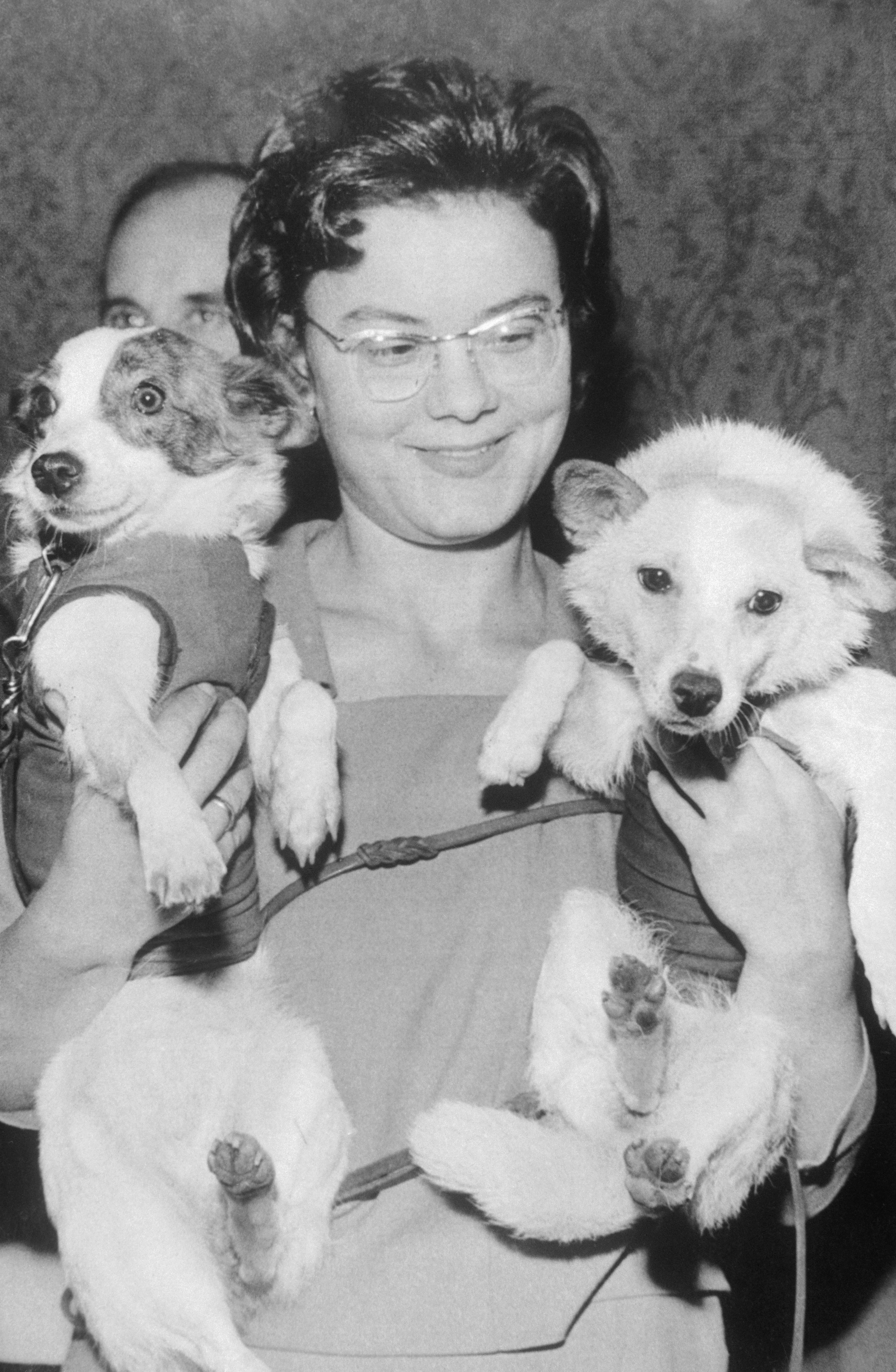
The get-go animal to orbit Earth was Laika, another Soviet dog who launched in 1957. American reporters dubbed her "Muttnik" equally a pun on Sputnik, which the Soviet Marriage had launched nigh a month prior and which became the first satellite to reach orbit. Laika died in orbit as a re-entry strategy could not be worked out in fourth dimension for the launch.
The first mammals to orbit World and survive were a host of animals that the Soviet Union launched on a mission chosen Sputnik 5 on Aug. nineteen, 1960. The most famous crewmembers on this flight were ii other Soviet space dogs, Belka and Strelka, only the flying likewise carried "a grey rabbit, forty mice, 2 rats, and 15 flasks of fruit flies and plants," according to NASA (opens in new tab).
In 1968, two steppe tortoises became the first animals to fly around the moon as part of the Soviet Zond 5 mission, which was the kickoff successful mission around the moon, according to NASA (opens in new tab). The Zond five tortoises survived the trip, but were dissected after their return to Earth so that scientists could compare them with grounded counterparts for whatever bear upon of spaceflight. (None of the viii tortoises involved in the experiment were allowed to eat get-go 12 days before launch, and apparently "the main structural changes in the tortoises were caused past starvation," according to NASA.)
Other famous animals in space
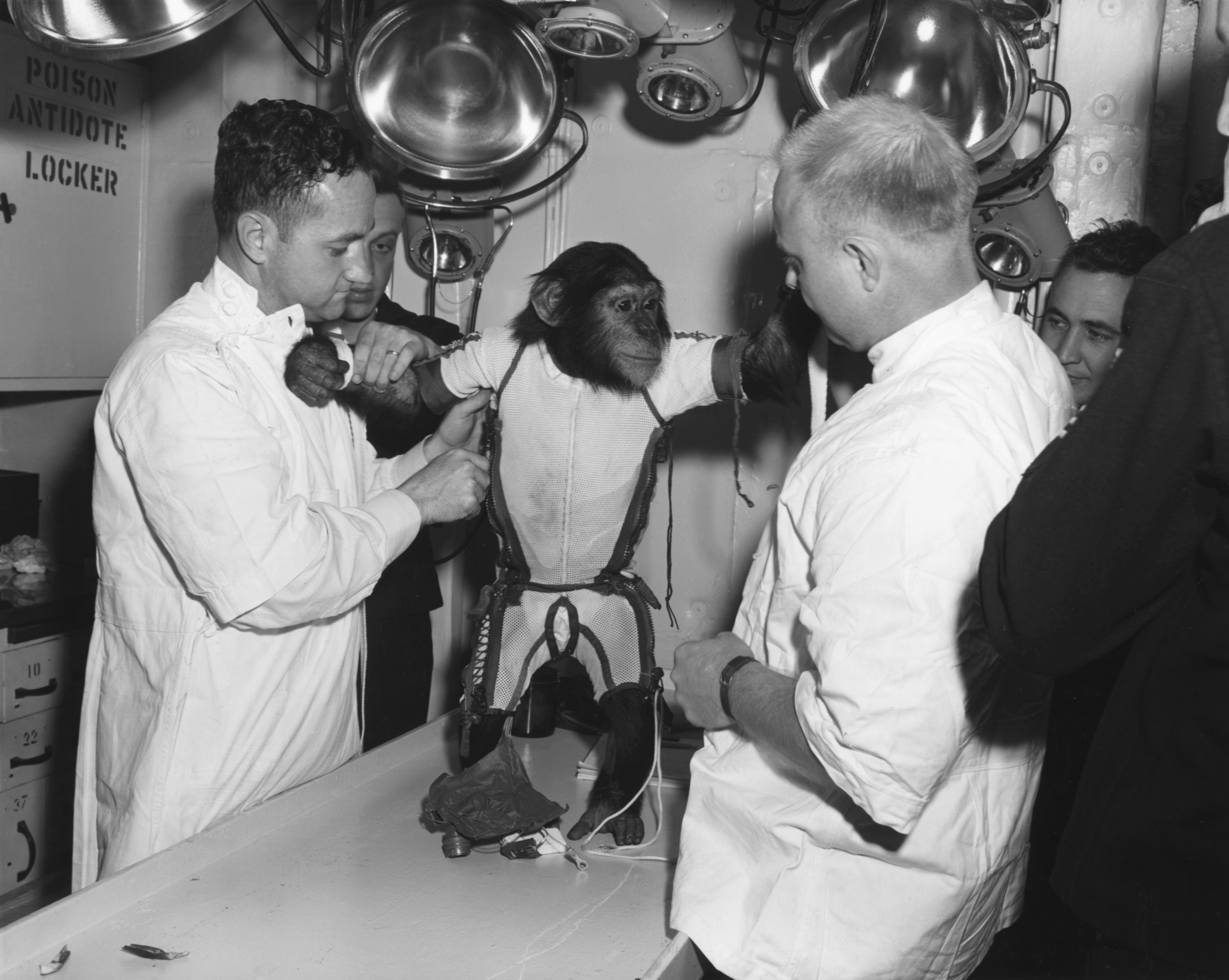
In the early decades of spaceflight, many animals reached space — and fame — fifty-fifty later on the notable "firsts" were all claimed.
Gordo, a squirrel monkey, launched 600 miles high on Dec. 13, 1958. He died on splashdown when a flotation device failed.
Able, a Rhesus monkey, and Baker, a squirrel monkey, were launched together on May 28, 1959. Able and Baker flew 300 miles high and returned unharmed. Even so, Able died during an operation to remove an electrode from under her skin. Baker lived until 1984, dying of kidney failure at age 27.
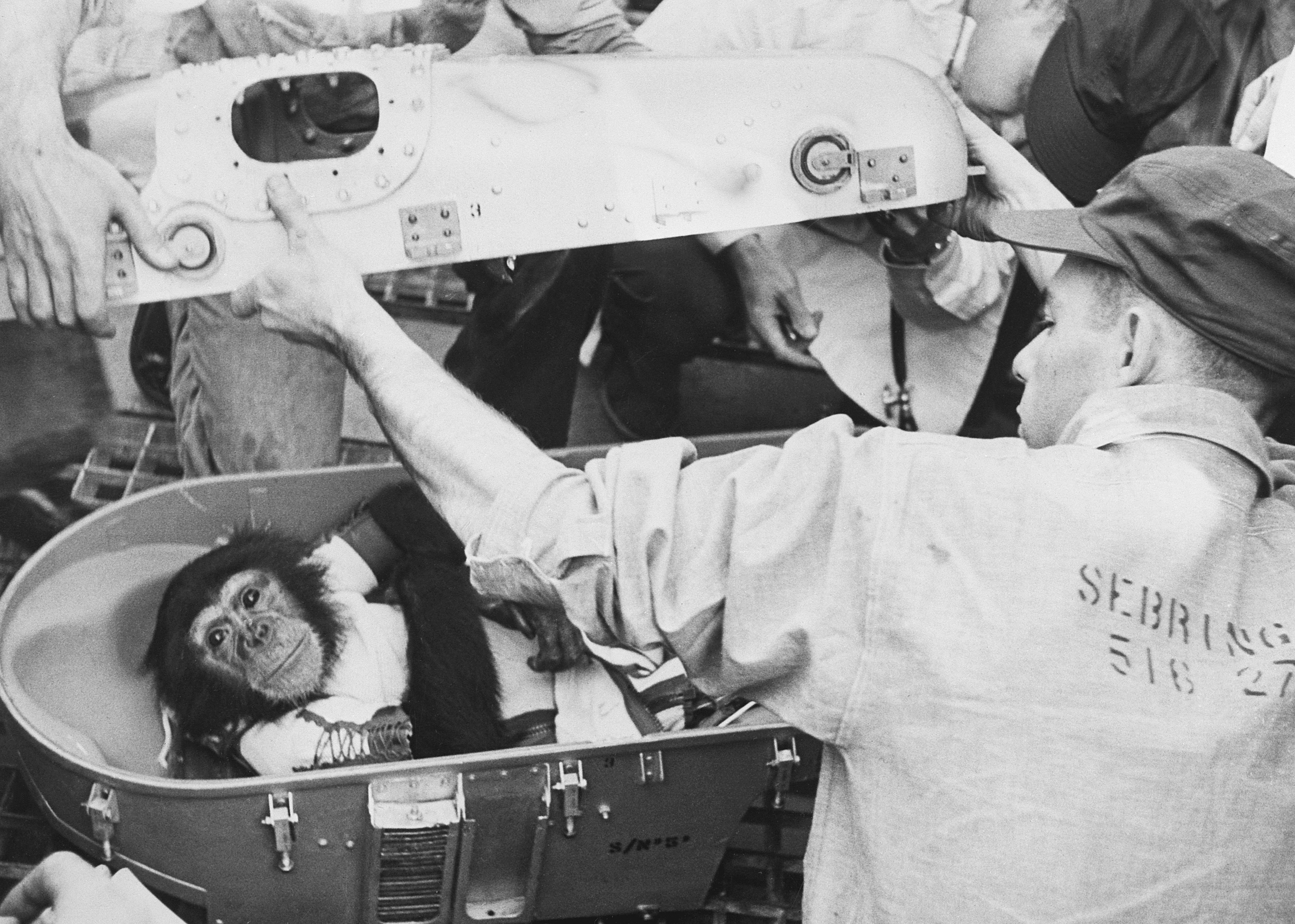
Ham was a chimpanzee trained to perform tasks during spaceflight. Ham, named after the Holloman Aerospace Medical Center, became a celebrity after his flight on January. 31, 1961. Ham learned to pull levers to receive banana pellets and avoid electrical shocks. He successfully became the first animal to really interact with a space vessel rather than simply ride in it.
On Oct. eighteen, 1963, French scientists launched the outset cat into space; Félicette survived her flight and was successfully retrieved after a parachute descent.
Ii Russian dogs, Veterok and Ugolyok were launched into space on Feb. 22, 1966. They orbited for a record-breaking 22 days; humans did non surpass that record until 1974.
Living nematodes were establish in the wreckage of the space shuttle Columbia three months after the spacecraft bankrupt upward while re-entering Earth's temper, according to NASA (opens in new tab).
Animals in space research
Although the early on brute astronauts achieved great fame, many other animals have quietly contributed to the body of scientific knowledge about life in space. As humans accept grown more than accustomed to space travel, fewer animals brand the front-page news.
Nonetheless, their contributions are important. Nearly all of their flights have been designed to study the effects of microgravity on the biological functions of creatures from Earth.
Some of the biological functions that have been studied are (to name only a few): encephalon states, behavioral performance, cardiovascular condition, fluid and electrolyte balance, metabolic state, tissue development, and mating in nada gravity.
Here are some examples of specific experiments:
Nov. 9, 1970: Two bullfrogs were launched on a one-way mission to learn more about infinite motion sickness.
July 28, 1973: Two garden spiders named Arabella and Anita (opens in new tab) were used to study how orbiting earth would impact spiders' ability to spin webs. Arabella spun a fairly symmetric web even though the thread thickness varied — something that earthbound spiders don't feel.
July 10, 1985: Ten newts flew on the Soviet-launched Bion seven (opens in new tab) satellite. Their forepart limbs were amputated in club to report regeneration in space to better sympathise how humans might recover from infinite injuries.
April 17, 1998: More than 2,000 creatures joined in xvi days of neurological testing aslope the seven-member homo crew of the shuttle Columbia.
Animals on the International Infinite Station
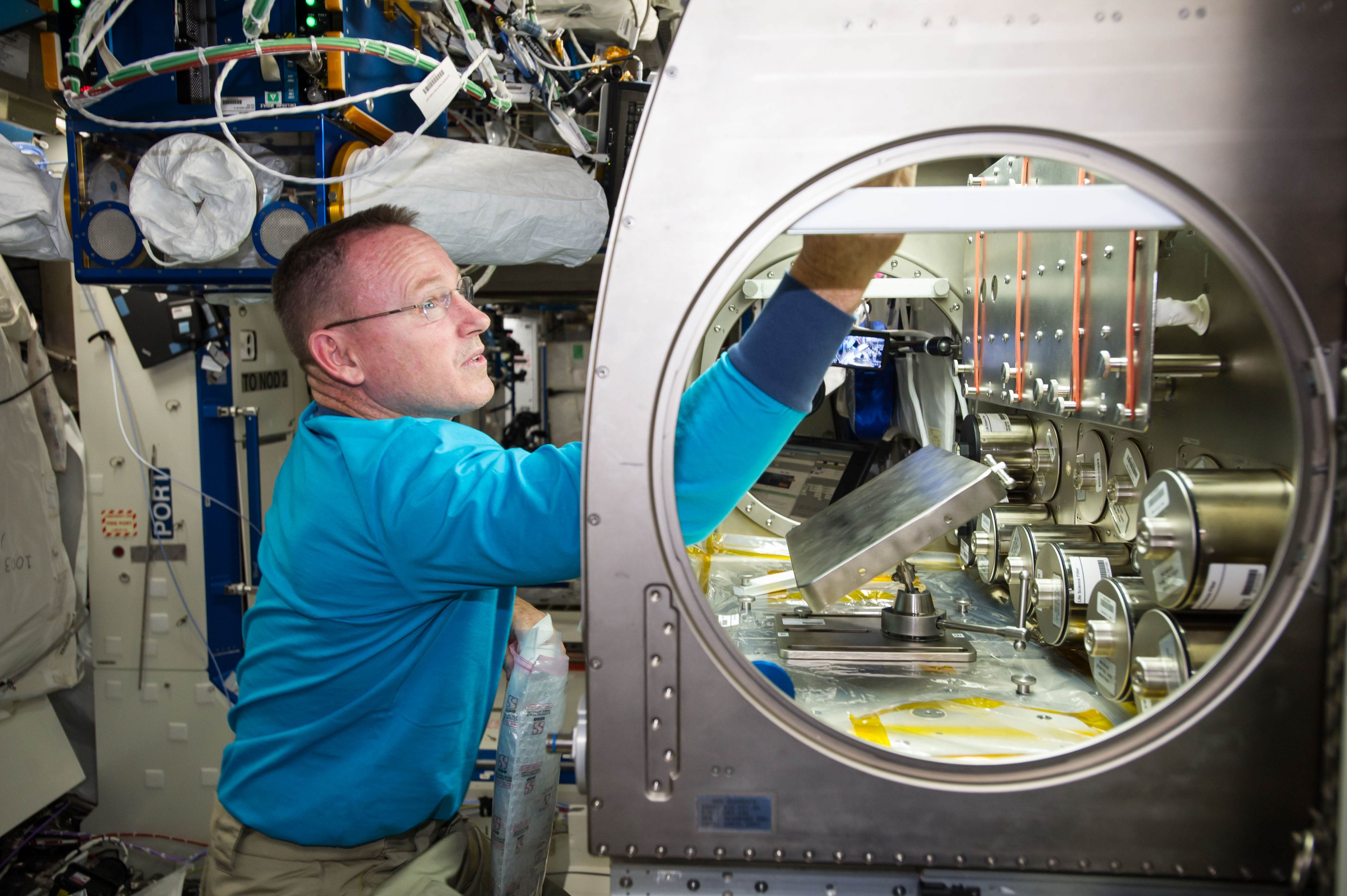
Animals continue to be studied in infinite today, particularly on the International Space Station. Some examples of space station experiments include:
2014: A student experiment sent a colony of ants to the ISS and compared them to other colonies on Earth. The aim was to see how microgravity affects the movements of the space ants as they search for food.
2016: Twelve male person mice were sent to the orbiting circuitous for xxx days so that researchers could expect at changes in the animals' Dna.
2017: Healthy mouse babies arose from mice sperm hosted on the ISS for nearly 300 days in 2013-14, suggesting that sperm for other species could exist hosted off-Earth in case of catastrophe.
2021: A SpaceX cargo capsule carried research equipment including bobtail squid to the International Space Station in June 2021. On World, these animals host microbes that allow the squid to glow in the nighttime, according to NASA (opens in new tab), making baby squid a helpful model for studying how the microbiome endures conditions in infinite. The human being microbiome is vital for processes like digesting food, and researchers desire to understand how these partnerships are affected by spaceflight.
Additional resources and reading
Read an interview with author Stephen Walker about the office animals played in early spaceflight. A Time photo characteristic (opens in new tab) highlights several of the early animals in space, and a feature in The Atlantic (opens in new tab) digs into why Soviets focused on dogs and Americans on monkeys.
Bibliography
- Grayness, T. "A Brief History of Animals in Space," NASA, 1998. https://history.nasa.gov/animals.html (opens in new tab)
- Mains, R., et al. "A Researcher's Guide to International Infinite Station Rodent Inquiry," NASA, 2015. https://world wide web.nasa.gov/sites/default/files/atoms/files/np-2015-03-016-jsc_rodent-iss-mini-book-508.pdf (opens in new tab)
- NASA, "Project Mercury Ballistic and Orbital Chimpanzee Flights (CHIMP)," https://lsda.jsc.nasa.gov/Experiment/exper/907 (opens in new tab)
- NASA, "Skylab 3: Return to Skylab," July 25, 2018. https://www.nasa.gov/feature/skylab-3-return-to-skylab (opens in new tab)
- NASA, "Zond v," Feb. 25, 2019. https://solarsystem.nasa.gov/missions/zond-5/in-depth/ (opens in new tab)
- NASA Infinite Science Information Coordinated Archive, "Bion 7," https://nssdc.gsfc.nasa.gov/nmc/spacecraft/brandish.action?id=1985-059A (opens in new tab)
- Ibid., "Cosmos 110," https://nssdc.gsfc.nasa.gov/nmc/spacecraft/brandish.action?id=1966-015A (opens in new tab)
- Uri, J. "60 Years Agone: Soviets Select Their First Cosmonauts," NASA, Feb. 25, 2020. https://www.nasa.gov/feature/60-years-ago-soviets-select-their-first-cosmonauts (opens in new tab)
Join our Space Forums to keep talking space on the latest missions, dark sky and more! And if you accept a news tip, correction or annotate, let us know at: community@space.com.
Source: https://www.space.com/animals-in-space
Posted by: jacksonbabinfor.blogspot.com

0 Response to "Where Are The Dead Animals In Space?"
Post a Comment